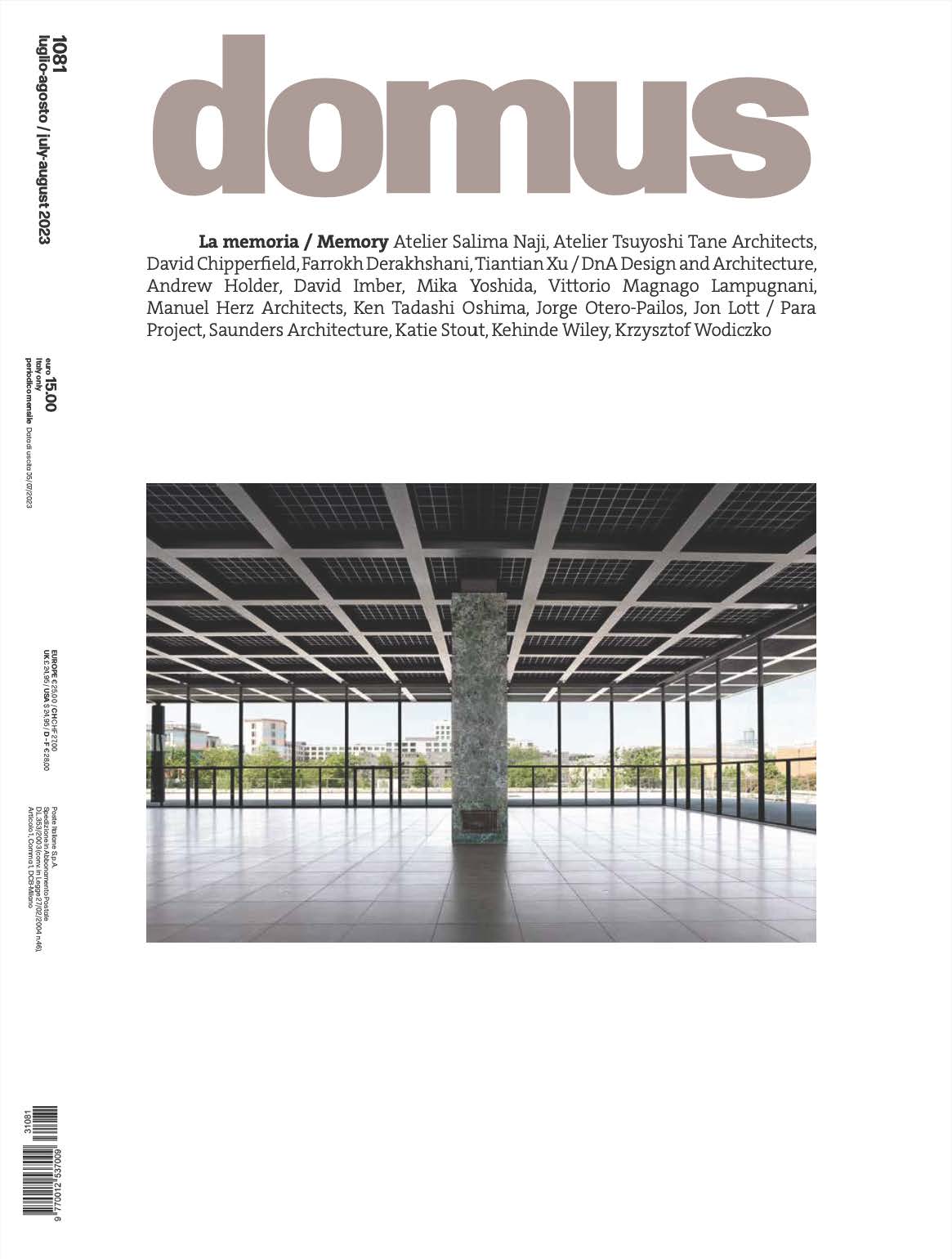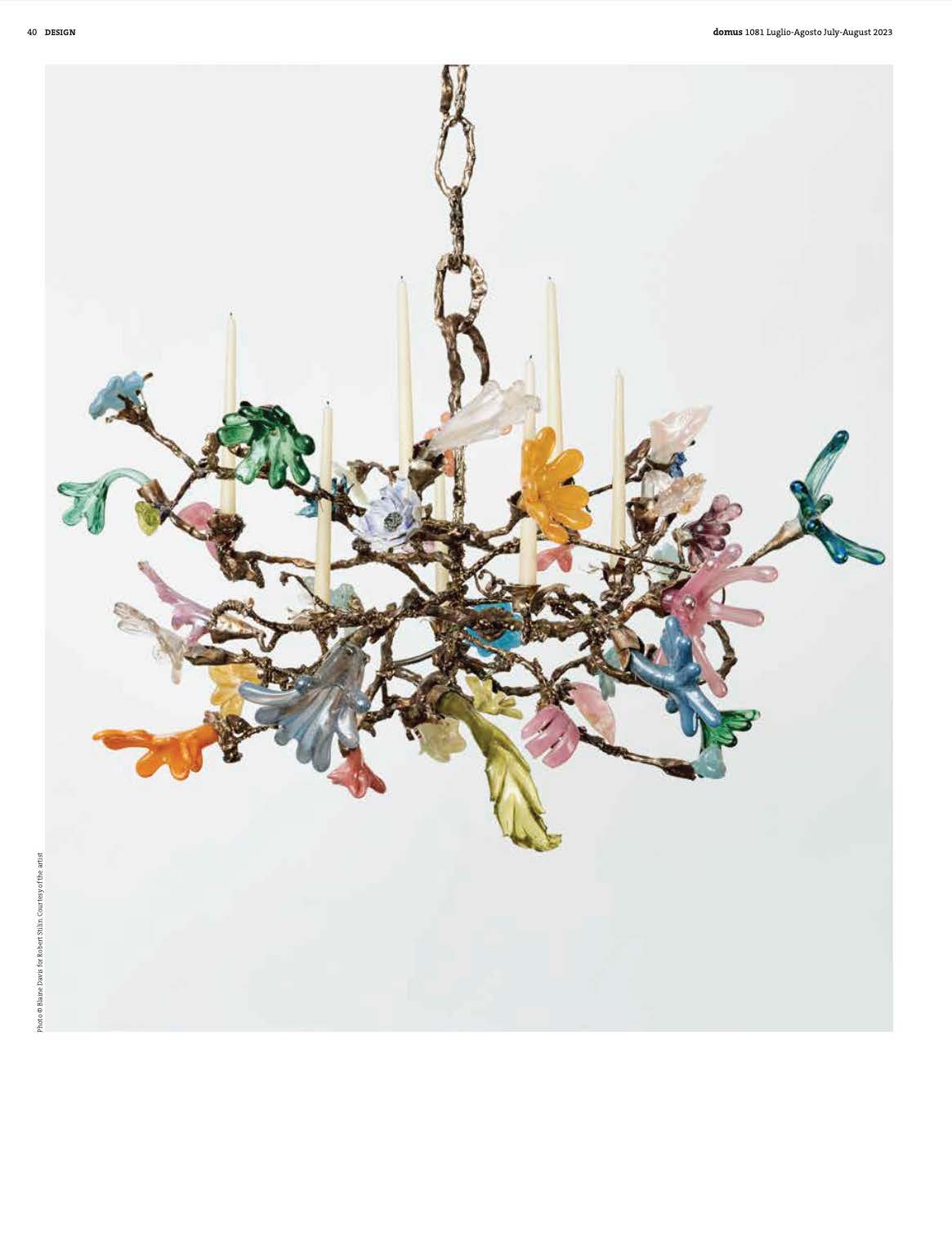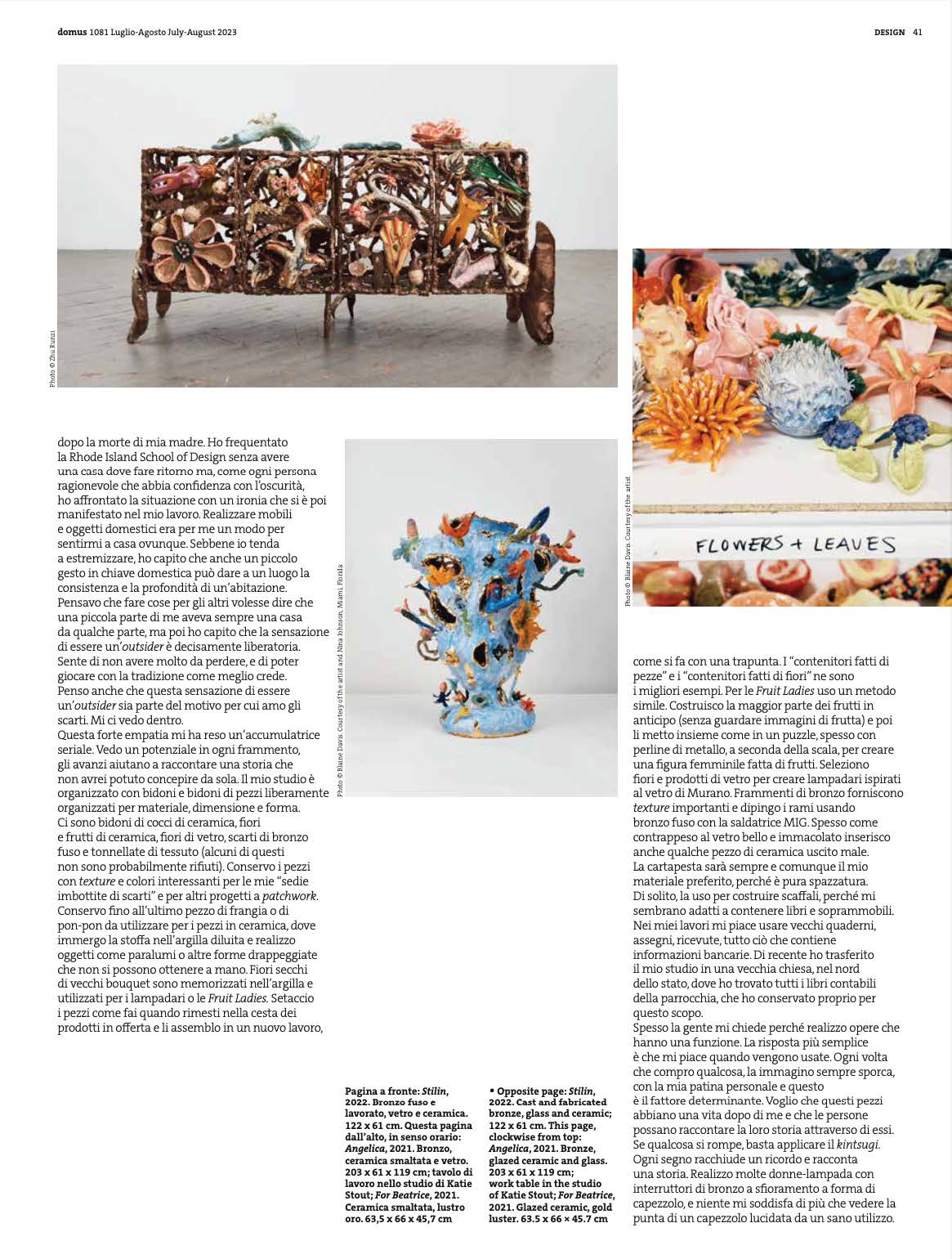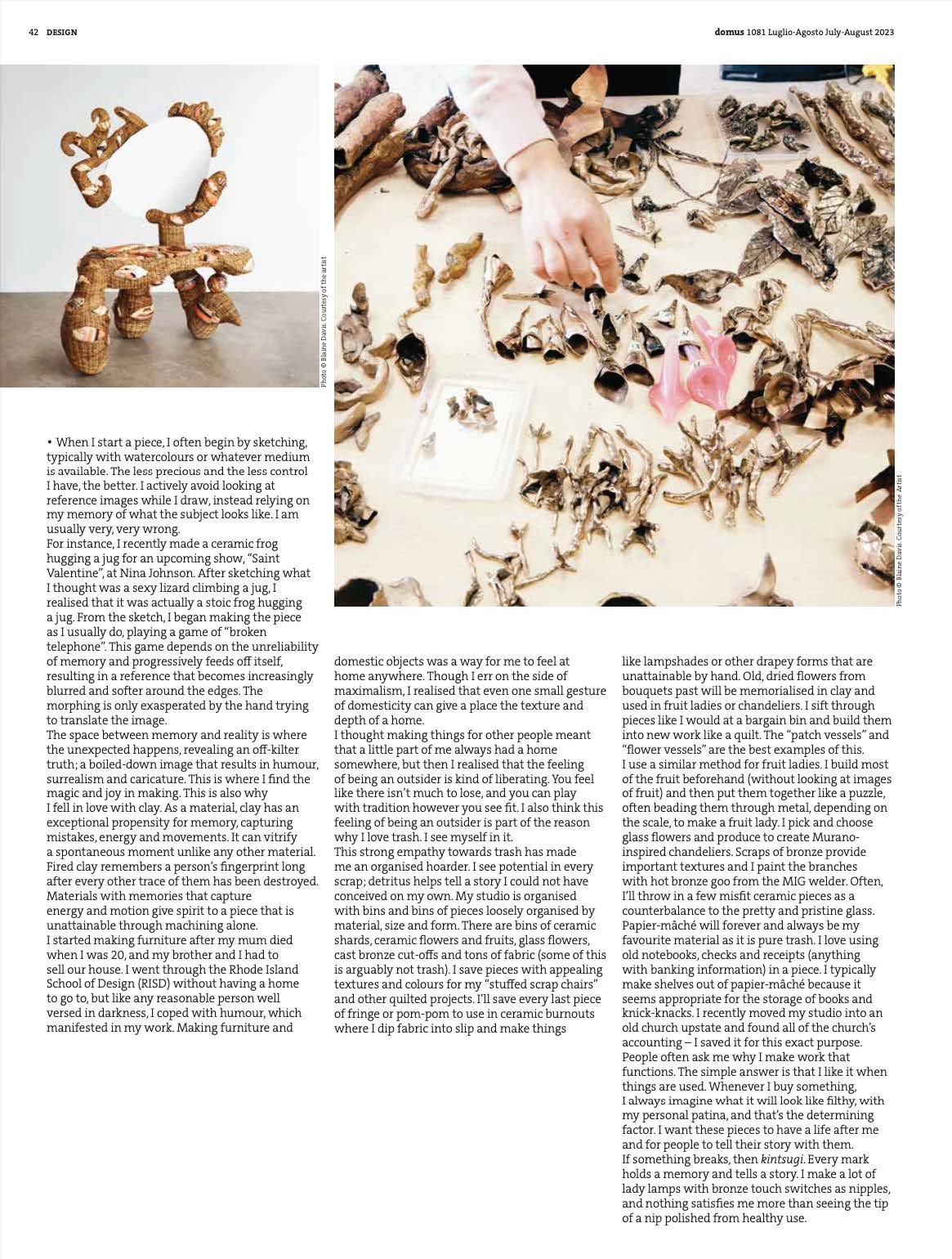Katie Stout, Tactile Recollection

Katie Stout
Tactile recollection
The space between memory
and reality underlies the practice
of the American artist and designer.
Furniture and domestic objects
take shape by combining trash
and heterogeneous materials
When I start a piece, I often begin by sketching,
typically with watercolours or whatever medium
is available. The less precious and the less control
I have, the better. I actively avoid looking at
reference images while I draw, instead relying on
my memory of what the subject looks like. I am
usually very, very wrong.
For instance, I recently made a ceramic frog
hugging a jug for an upcoming show, “Saint
Valentine”, at Nina Johnson. After sketching what
I thought was a sexy lizard climbing a jug, I
realised that it was actually a stoic frog hugging
a jug. From the sketch, I began making the piece
as I usually do, playing a game of “broken
telephone”. This game depends on the unreliability
of memory and progressively feeds off itself,
resulting in a reference that becomes increasingly
blurred and softer around the edges. The
morphing is only exasperated by the hand trying
to translate the image.
The space between memory and reality is where
the unexpected happens, revealing an off-kilter
truth; a boiled-down image that results in humour,
surrealism and caricature. This is where I find the
magic and joy in making. This is also why
I fell in love with clay. As a material, clay has an
exceptional propensity for memory, capturing
mistakes, energy and movements. It can vitrify
a spontaneous moment unlike any other material.
Fired clay remembers a person’s fingerprint long
after every other trace of them has been destroyed.
Materials with memories that capture
energy and motion give spirit to a piece that is
unattainable through machining alone.
I started making furniture after my mum died
when I was 20, and my brother and I had to
sell our house. I went through the Rhode Island
School of Design (RISD) without having a home
to go to, but like any reasonable person well
versed in darkness, I coped with humour, which
manifested in my work. Making furniture and domestic objects was a way for me to feel at home anywhere. Though I err on the side of
maximalism, I realised that even one small gesture
of domesticity can give a place the texture and
depth of a home.
I thought making things for other people meant
that a little part of me always had a home
somewhere, but then I realised that the feeling
of being an outsider is kind of liberating. You feel
like there isn’t much to lose, and you can play
with tradition however you see fit. I also think this
feeling of being an outsider is part of the reason
why I love trash. I see myself in it.
This strong empathy towards trash has made
me an organised hoarder. I see potential in every
scrap; detritus helps tell a story I could not have
conceived on my own. My studio is organised
with bins and bins of pieces loosely organised by
material, size and form. There are bins of ceramic
shards, ceramic flowers and fruits, glass flowers,
cast bronze cut-offs and tons of fabric (some of this
is arguably not trash). I save pieces with appealing
textures and colours for my “stuffed scrap chairs”
and other quilted projects. I’ll save every last piece
of fringe or pom-pom to use in ceramic burnouts
where I dip fabric into slip and make things like lampshades or other drapey forms that are unattainable by hand. Old, dried flowers from
bouquets past will be memorialised in clay and
used in fruit ladies or chandeliers. I sift through
pieces like I would at a bargain bin and build them
into new work like a quilt. The “patch vessels” and
“flower vessels” are the best examples of this.
I use a similar method for fruit ladies. I build most
of the fruit beforehand (without looking at images
of fruit) and then put them together like a puzzle,
often beading them through metal, depending on
the scale, to make a fruit lady. I pick and choose glass flowers and produce to create Murano- inspired chandeliers. Scraps of bronze provide important textures and I paint the branches
with hot bronze goo from the MIG welder. Often,
I’ll throw in a few misfit ceramic pieces as a
counterbalance to the pretty and pristine glass.
Papier-mâché will forever and always be my
favourite material as it is pure trash. I love using
old notebooks, checks and receipts (anything
with banking information) in a piece. I typically
make shelves out of papier-mâché because it
seems appropriate for the storage of books and
knick-knacks. I recently moved my studio into an
old church upstate and found all of the church’s
accounting – I saved it for this exact purpose.
People often ask me why I make work that
functions. The simple answer is that I like it when
things are used. Whenever I buy something,
I always imagine what it will look like filthy, with
my personal patina, and that’s the determining
factor. I want these pieces to have a life after me
and for people to tell their story with them.
If something breaks, then kintsugi. Every mark
holds a memory and tells a story. I make a lot of
lady lamps with bronze touch switches as nipples,
and nothing satisfies me more than seeing the tip
of a nip polished from healthy use.
Edited by Toshiko Mori in the July/August 2023 1081 Issue of Domus.





